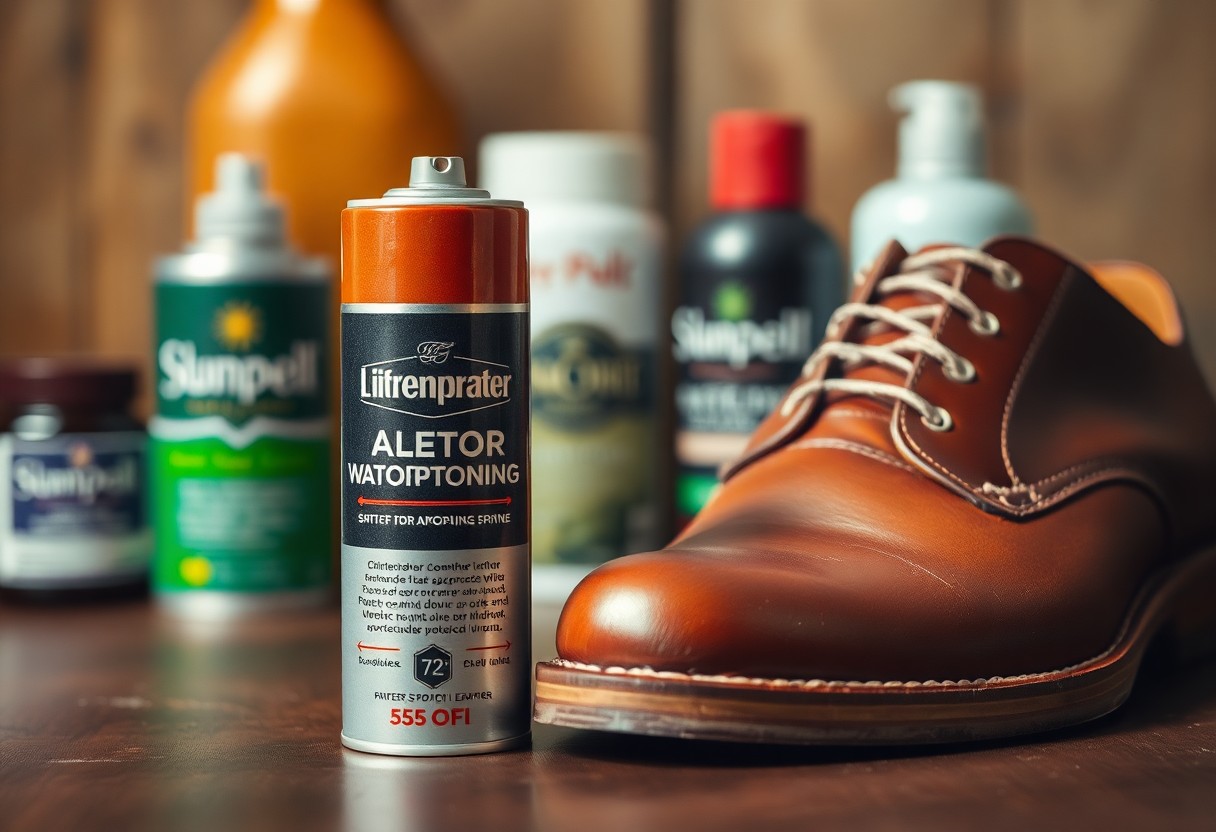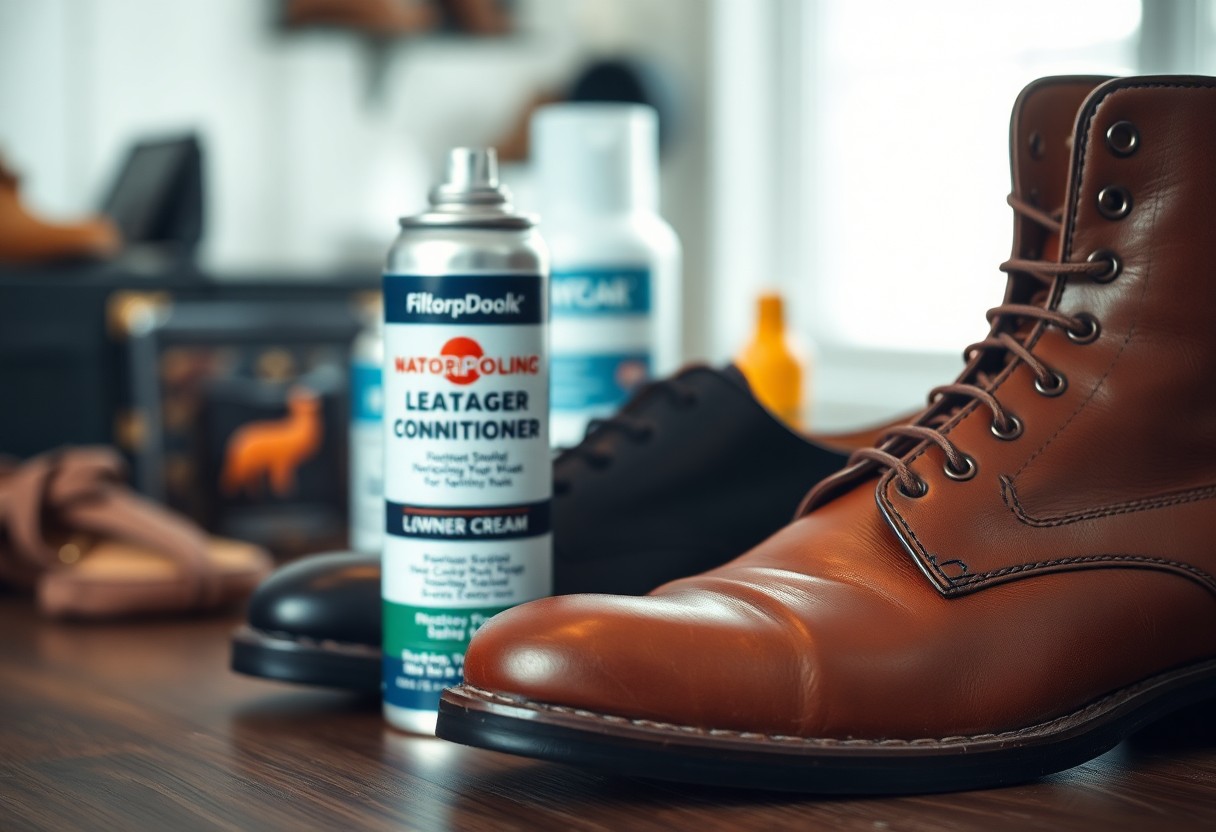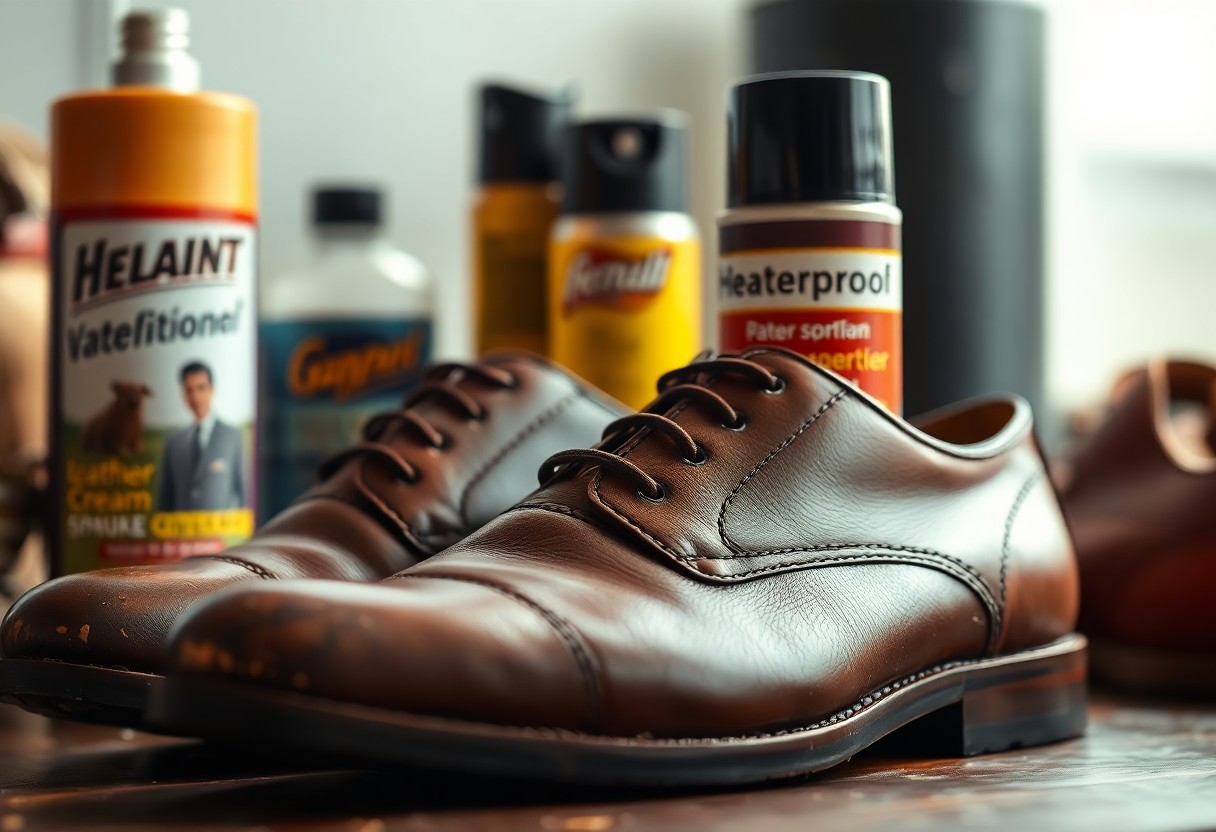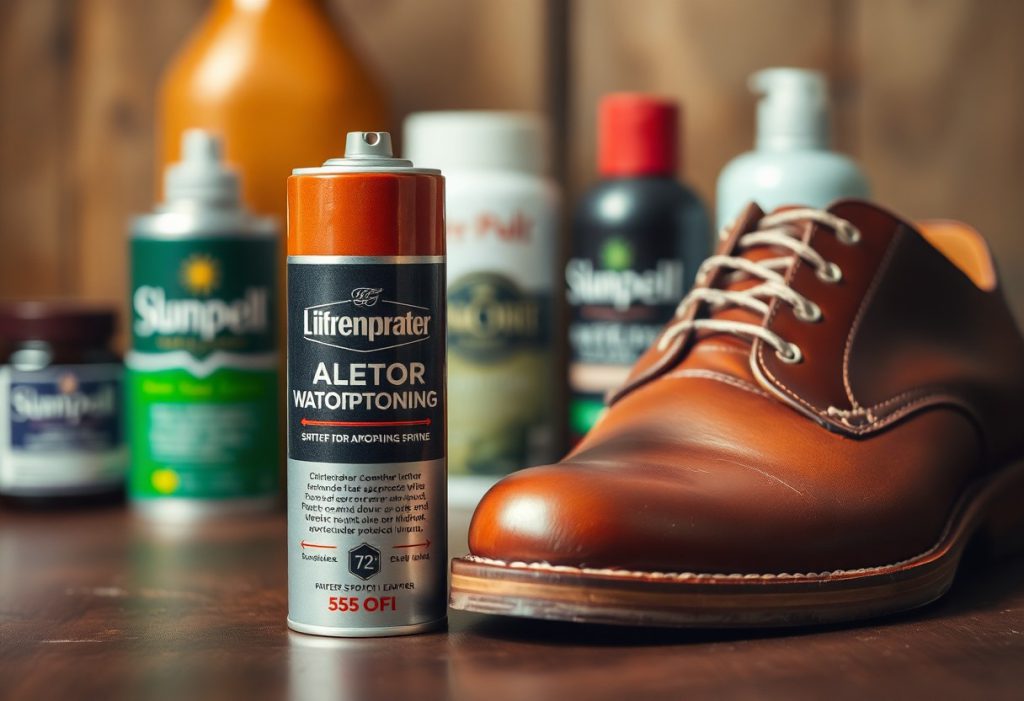Leather care mistakes can lead to irreversible damage to your expensive shoes, and one of the most common errors is the application of waterproofing spray on smooth leather. While these sprays may seem like a quick fix to protect your footwear, they can interfere with crucial nutrients from penetrating the leather, leading to drying and cracking over time. Smooth leather shoes are designed with inherent water-resistant properties within their grain layer, necessitating proper nourishment through shoe creams and waxes to maintain their durability. Instead of relying on sprays, choose high-quality leather conditioners and wax polishes that nourish and protect the leather, enhancing its longevity while preserving its natural beauty.
Mastering the Fundamentals of Leather Protection for Lasting Footwear
To ensure the longevity of your leather goods, it’s essential to comprehend their protective characteristics. Full grain leather boasts natural water-resistant properties due to its tightly woven fiber structure. However, these qualities require consistent maintenance to remain effective. The durability of your leather significantly hinges on the care it receives. Employing waterproofing sprays can hinder the leather’s ability to breathe, potentially leading to severe damage over time if not managed appropriately. Understanding these nuances in leather care is vital for preserving your investment in quality footwear.
Unveiling the Remarkable Benefits of Full Grain Leather
After the tanning process, full grain leather retains its original surface layer, offering exceptional natural protection. Leather items crafted from this material feature an intact grain layer, which provides resistance against moisture and wear. This top layer is enriched with natural oils and fibers that create a protective barrier, rendering additional waterproofing sprays unnecessary and potentially damaging to the leather’s health. Understanding this intrinsic quality can guide you toward better care practices that enhance the lifespan of your leather goods.
Grasping Leather’s Moisture Regulation and Natural Aging Process
Grain leather must retain its ability to absorb and expel moisture. The pores in your leather facilitate its capacity to breathe and regulate moisture, keeping it flexible and preventing unsightly cracking. However, waterproofing sprays can seal these pores, impeding vital airflow and disrupting the natural moisture equilibrium. Furthermore, as leather ages, it requires appropriate nourishment through conditioning products. When waterproofing sprays are applied, they form a barrier that prevents vital conditioning oils from reaching the leather, leading to dryness and brittleness over time. Consistent application of leather cream allows your leather to mature gracefully, developing a rich, desirable patina that enhances its aesthetic appeal.

Recognizing the Dangers of Common Waterproofing Spray Practices
Many individuals mistakenly believe that waterproofing spray is the ultimate solution for protecting their leather shoes, but this widespread belief can lead to significant harm to your footwear. Although these sprays provide an immediate barrier against water intrusion, they simultaneously block necessary nutrients from penetrating the leather, creating a risk for long-term degradation. Understanding the implications of this common practice can help you make informed decisions about your leather care routine.
Disproving Common Myths About Leather Care Marketing Claims
Influenced by aggressive marketing campaigns and well-meaning advice from shoe store employees, you may have been led to believe that waterproofing spray is essential for all leather shoes. This misconception has been perpetuated by many shoe retailers, largely due to the high profit margins and frequent repurchase rates associated with these products. The truth is that regular smooth leather is endowed with natural protective properties that eliminate the need for additional spray-on barriers for effective safeguarding. Recognizing these truths can empower you to choose better leather care options.
Assessing Short-Term Advantages Versus Long-Term Leather Health Risks
Damage to your leather shoes begins when waterproofing sprays create a barrier that prevents essential oils and conditioning agents from saturating the leather. While you may initially observe improved water resistance, the reality is that your leather gradually becomes dry and brittle without the critical nourishment it requires. The consequences of using waterproofing sprays on smooth leather extend beyond surface protection. Your leather requires consistent nourishment to maintain its flexibility and durability. When shoe creams and conditioners cannot permeate the leather due to the spray barrier, the material is at risk of cracking and deterioration, significantly reducing your shoes’ lifespan. Opting for natural waxes and suitable conditioning methods provides superior long-term protection while nurturing the leather’s health.

Delving Deeper into the Science Behind Effective Leather Care
A fundamental aspect of effective leather care involves understanding its molecular structure. The collagen fiber networks within your leather shoes require both protection and nourishment. When products are applied to leather, they interact with these fibers either by coating them or penetrating their depths. This interaction is crucial for the long-term health of your leather shoes, as it determines how well the material can withstand the tests of time and wear.
Emphasizing the Necessity of Nourishing Leather Regularly
It is vital to recognize that your leather shoes require regular nourishment to maintain their quality. The natural oils within your leather shoes help to prevent cracking and ensure flexibility. Over time, these oils diminish due to wear and environmental exposure. To preserve the leather’s structural integrity, replenishing these oils through consistent conditioning is essential. By giving your leather the care it needs, you can prolong its life and maintain its visual appeal.
Understanding the Barrier Effects Created by Waterproofing Sprays
A significant issue with waterproofing sprays is their tendency to form a barrier. When these sprays are applied to smooth leather, they create an impermeable layer that obstructs both water and vital nutrients. This barrier prevents your leather care products from effectively penetrating the surface, leading to a gradual decline in the leather’s quality over time. Understanding this effect is critical for anyone serious about leather care.
The barrier effect of waterproofing sprays creates a problematic cycle for your shoes. While these sprays effectively block water, they simultaneously obstruct the absorption of conditioning products that are essential for maintaining the leather’s health. Consequently, the leather may appear protected on the surface but is, in reality, dehydrating and becoming brittle underneath. Silicone-based sprays are particularly harmful, forming a permanent barrier that is difficult to remove without damaging the leather.
Implementing Proven Methods for Effective Leather Protection
Contrary to popular misconceptions, your smooth leather shoes necessitate targeted care methods that align with the natural properties of full-grain leather. The best approach harmonizes traditional techniques with products specifically designed to enhance the leather’s innate protective qualities, ensuring both immediate protection and lasting durability for your footwear. Adopting these practices can dramatically improve the lifespan of your leather shoes.
Discovering the Superior Benefits of Wax-Based Solutions
An excellent alternative to waterproofing sprays lies in high-quality wax-based products. These solutions work harmoniously with your leather’s natural grain rather than opposing it. Applying wax polish creates a protective barrier that still allows the leather to breathe, making it especially beneficial for toe caps and high-wear areas. Understanding how to use these products effectively can enhance your leather care routine.
Maximizing the Benefits of Cream and Conditioner Applications for Leather
In contrast to conventional spray treatments, leather creams and conditioners offer essential nourishment while preserving the leather’s inherent protective properties. Your shoes benefit from oils that penetrate deeply into the material, helping to prevent drying and cracking. Furthermore, regular applications of cream and conditioner create a cumulative effect that enhances leather quality over time. The natural oils in these products support the leather’s flexibility and strength while allowing it to develop a stunning patina. It’s advisable to apply these products every 4-6 wears to maintain optimal leather condition.

Identifying the Right Situations for Waterproofing Spray Application
Unlike smooth leather, certain materials greatly benefit from waterproofing sprays. These products create an effective water-resistant barrier on specific materials that lack innate protection. Waterproofing sprays are particularly advantageous for suede, nubuck, and various textiles, where the material structure does not provide natural resistance to moisture. Understanding the differences between leather types can help you select the right care methods.
Enhancing Suede and Nubuck Longevity with Waterproofing Spray
When you treat your suede or nubuck shoes with waterproofing spray, you significantly bolster their resistance to moisture damage. While many modern suede materials come pre-treated with factory waterproofing, adding extra protection can help maintain this defense over time. The application of spray creates a protective barrier that effectively prevents water from infiltrating these delicate materials, ensuring their durability and appearance.
Ensuring Effective Protection for Textile Footwear from Water Damage
In addition to leather alternatives, textile footwear requires specialized protection against water damage. Materials like canvas, mesh, and synthetic fabrics can achieve enhanced water resistance through proper spray application. Most textile materials are inherently absorbent, rendering them vulnerable to water damage and staining.
Moreover, waterproofing sprays for textiles also help preserve the shape and color of your shoes. The barrier they establish prevents dirt and debris from embedding in the fabric fibers. It’s recommended to reapply the spray every 3-4 months for optimal protection, depending on the frequency of wear and prevailing weather conditions. This proactive approach can extend the life of your textile footwear.
Insights from Industry Professionals on Proper Leather Care Techniques
Not all leather treatments are created equal. Experts in leather care strongly advise against the use of waterproofing sprays on smooth leather. Your full-grain leather shoes require specialized care that allows them to breathe and absorb nourishing treatments. Using inappropriate products can result in leather damage costing hundreds of dollars, which can be avoided by following expert recommendations.
Perspectives from Tannery Specialists on Leather Maintenance
To maintain the quality of leather, tannery specialists emphasize that full-grain leather inherently possesses natural water-resistant properties in its outer layer. Preserving the leather’s protective qualities necessitates the application of oils and waxes. Waterproofing sprays can obstruct these essential treatments from reaching the leather, jeopardizing its health and longevity. Understanding this can help you make better choices for your leather footwear.
Advice from Professional Cobblers on Leather Care Best Practices
For the long-term care of leather, professional cobblers advocate for the use of wax-based products instead of waterproofing sprays. Your shoes will thrive from treatments that both protect and nourish the leather. Studies indicate that 90% of premature leather damage results from the use of inappropriate care products. By adhering to proper leather care techniques, your shoes can last an impressive 15-20 years instead of just 2-3 years with poor maintenance. Traditional wax treatments allow leather to maintain its natural qualities while providing adequate moisture protection. Your investment in quality leather footwear deserves meticulous care practices that preserve both aesthetic appeal and durability.
Essential Takeaways for Optimal Leather Care Practices
Your smooth leather shoes require appropriate care that excludes waterproofing sprays. Instead, opt for shoe creams and waxes that nourish the leather while providing effective water protection. Full-grain leather naturally possesses protective qualities due to its grain layer, and waterproofing sprays may block essential oils from penetrating the leather, leading to dryness and cracking. Reserve waterproofing sprays for suede, nubuck, or textile footwear where they can be effective. By selecting the right products, you can safeguard your leather shoes while ensuring their longevity and maintaining their beauty.
Frequently Asked Questions about Effective Leather Care
Q: Why is waterproofing spray detrimental to smooth leather shoes?
A: Waterproofing spray creates a barrier on leather that obstructs essential oils and conditioners from penetrating the material. While it does offer water protection, it hinders the necessary nourishment of the leather, leading to drying and potential cracking over time, ultimately reducing the lifespan of the shoes.
Q: What alternatives should I use instead of waterproofing spray on smooth leather shoes?
A: Consider using a combination of shoe cream and wax polish instead. Shoe cream supplies essential oils to nourish the leather, while wax polish establishes a protective layer that helps repel water. This method works harmoniously with the natural protective properties of full-grain leather, maintaining the leather’s health while offering effective water resistance.
Q: Which types of footwear can I safely apply waterproofing spray to?
A: Waterproofing spray is suitable for materials such as suede, nubuck, and textiles. These materials lack the natural protection found in smooth leather and thus benefit from the protective barrier created by waterproofing sprays. Many modern suedes and nubucks may already have factory waterproofing treatments, but additional spray applications can enhance and maintain this level of protection.
The Article Why you shouldn’t use waterproofing spray on regular smooth leather and better alternatives appeared first on My Shoes Finder
The Article Waterproofing Spray on Smooth Leather: Risks and Alternatives Was Found On https://limitsofstrategy.com



Your insights on leather care resonate deeply with anyone who appreciates the craftsmanship behind quality footwear. It’s striking how often consumers opt for quick fixes at the expense of long-term maintenance, especially when it comes to something as valuable as smooth leather shoes. The allure of waterproofing sprays can be tempting, particularly in our fast-paced lives where convenience often trumps diligence. However, the message that you’ve conveyed serves as a crucial reminder about the significance of understanding the materials we invest in.